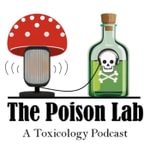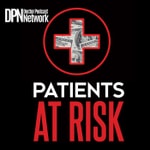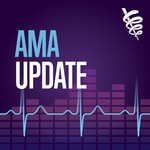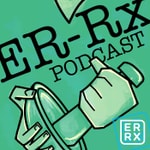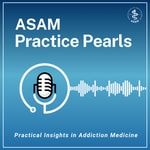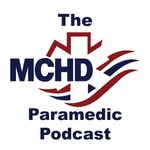This Week in Addiction Medicine from ASAM – Détails, épisodes et analyse
Détails du podcast
Informations techniques et générales issues du flux RSS du podcast.

This Week in Addiction Medicine from ASAM
American Society of Addiction Medicine
Fréquence : 1 épisode/7j. Total Éps: 100

Classements récents
Dernières positions dans les classements Apple Podcasts et Spotify.
Apple Podcasts
🇨🇦 Canada - medicine
24/07/2025#95🇨🇦 Canada - medicine
23/07/2025#49🇨🇦 Canada - medicine
11/06/2025#84🇨🇦 Canada - medicine
09/06/2025#80🇨🇦 Canada - medicine
25/05/2025#83🇺🇸 États-Unis - medicine
29/01/2025#95🇺🇸 États-Unis - medicine
28/01/2025#77🇺🇸 États-Unis - medicine
27/01/2025#67🇺🇸 États-Unis - medicine
26/01/2025#52🇺🇸 États-Unis - medicine
25/01/2025#58
Spotify
Aucun classement récent disponible
Liens partagés entre épisodes et podcasts
Liens présents dans les descriptions d'épisodes et autres podcasts les utilisant également.
See allQualité et score du flux RSS
Évaluation technique de la qualité et de la structure du flux RSS.
See allScore global : 52%
Historique des publications
Répartition mensuelle des publications d'épisodes au fil des années.
ASAM Weekly Special Episode: Dr. Shannon Miller talks PAM-7 and his path to addiction medicine [From the ASAM 55th Annual Conference]
Épisode 135
lundi 30 septembre 2024 • Durée 21:09
In this episode recorded live at ASAM's 55th Annual Conference in Fort Worth, TX, host Dr. Nick Athanasiou sat down with Dr. Shannon Miller to discuss his work on PAM-7, and his path to addiction medicine.
Lead: Risk of Incident Psychosis and Mania With Prescription Amphetamines
Épisode 134
mardi 24 septembre 2024 • Durée 06:44
Risk of Incident Psychosis and Mania With Prescription Amphetamines
The American Journal of Psychiatry
This case-control study used electronic health records to examine the impact of dose levels of prescription amphetamines on the risk of incident psychosis and mania with prescription amphetamines. Among 1,374 case subjects and 2,748 control subjects, the odds of psychosis and mania were increased for individuals with past-month prescription amphetamine use compared with no use. A dose-response relationship was observed; high doses of amphetamines (>30 mg dextroamphetamine equivalents) were associated with 5.28-fold increased odds of psychosis or mania. Past-month methylphenidate use was not associated with increased odds of psychosis or mania compared with no use. Caution should be exercised when prescribing high doses of amphetamines, with regular screening for symptoms of psychosis or mania.
Lead: Psilocybin desynchronizes the human brain
Épisode 125
mardi 30 juillet 2024 • Durée 04:51
Psilocybin desynchronizes the human brain
Nature
To assess how human brain network changes relate to the subjective and lasting effects of psychedelics, this study tracked individual-specific brain changes with longitudinal precision functional mapping (roughly 18 magnetic resonance imaging visits per participant). Psilocybin massively disrupted functional connectivity (FC) in the cortex and subcortex, acutely causing more than threefold greater change than methylphenidate. These FC changes were driven by brain desynchronization across spatial scales (areal, global), which dissolved network distinctions by reducing correlations within and anticorrelations between networks. Persistent reduction of hippocampal-default mode network connectivity may represent a neuroanatomical and correlate of the proplasticity and therapeutic effects of psychedelics.
Lead: Secondhand Nicotine Absorption From E-Cigarette Vapor vs Tobacco Smoke in Children
Épisode 124
mardi 23 juillet 2024 • Durée 05:28
Secondhand Nicotine Absorption From E-Cigarette Vapor vs Tobacco Smoke in Children
JAMA Network Open
This cross-sectional study of 1,777 US children aged 3 to 11 years examined how children’s nicotine absorption, as indexed by serum cotinine level, differ among those exposed to (1) secondhand tobacco smoke only, (2) secondhand e-cigarette vapor only, or (3) neither. Compared with children exposed to secondhand smoke only, nicotine absorption was 83.6% lower in those exposed to secondhand vapor only and 96.7% lower in those exposed to neither. These findings suggest that children absorb much more nicotine from secondhand smoke than from secondhand vapor; switching from smoking to vaping indoors may substantially reduce children’s secondhand exposure to nicotine and other noxious substances, but both smoke and vapor increase children’s absorption vs no exposure.
Read this issue of the ASAM Weekly
Lead: Benzodiazepine use in relation to long-term dementia risk and imaging markers of neurodegeneration: a population-based study
Épisode 123
mardi 16 juillet 2024 • Durée 04:50
BMC Medicine
This study examined the relationship between benzodiazepine (BZD) use and dementia, using data from the population-based Rotterdam (Netherlands) study started in 1990. For 5,443 participants, BZD use during the 15 years from 1990 to 2005 was compared to dementia screens performed through 2020. Half of the participants had used BZD at some time during the 15-year baseline, and 13% developed dementia. Overall, there was no association between BZD use and dementia risk. However, the use of BZD as an anxiolytic in higher doses was associated with dementia risk (HR=1.3). The authors note that BZD with longer half-life are used as anxiolytics, whereas short half-life BZD are used as sedative-hypnotics. A reduction in hippocampal volume on MRI was also associated with BZD use. Overall, there was no association of BZD use with dementia risk, however, some associations were observed that deserve further study.
Lead: Extended-release ketamine tablets for treatment-resistant depression: a randomized placebo-controlled phase 2 trial
Épisode 122
mardi 9 juillet 2024 • Durée 05:43
Nature Medicine
The safety and tolerability of racemic ketamine may be improved if given orally, as an extended-release tablet (R-107), compared with other routes of administration. In this phase 2 multicenter clinical trial, male and female adult patients with treatment-resistant major depression (TRD) and Montgomery–Asberg Depression Rating Scale (MADRS) scores ≥20 received open-label R-107 tablets 120 mg per day for 5 days and were assessed on day 8 (enrichment phase). On day 8, responders (MADRS scores ≤12 and reduction ≥50%) were randomized to receive double-blind R-107 doses of 30, 60, 120, or 180 mg, or placebo, twice weekly for 12 weeks. Nonresponders on day 8 exited the study. Tolerability was excellent, with no changes in blood pressure, minimal reports of sedation, and minimal dissociation. The most common adverse events were headache, dizziness, and anxiety. R-107 tablets were effective, safe, and well tolerated in patients with TRD, enriched for initial response to R-107 tablets.
Lead: Global status report on alcohol and health and treatment of substance use disorders
Épisode 121
mardi 2 juillet 2024 • Durée 05:16
Global status report on alcohol and health and treatment of substance use disorders
World Health Organization
This report utilizes data from the WHO member states to summarize alcohol consumption, its health consequences, and alcohol policies around the world. Overall, there was a decrease in alcohol consumption between 2010 and 2019, but alcohol-related deaths still accounted for 4.7% of all deaths in 2019. Despite the burden, there are still significant gaps in access to and types of treatment available worldwide, with the percentage of patients with substance use disorder receiving care ranging from 1% to 30% in countries that gather that data. The report makes several recommendations to address the concern, including a global advocacy campaign, increased training for health professionals at all levels, international knowledge transfers, and resource mobilization.
Lead: Community-Based Cluster-Randomized Trial to Reduce Opioid Overdose Deaths
Épisode 120
mardi 25 juin 2024 • Durée 06:24
Community-Based Cluster-Randomized Trial to Reduce Opioid Overdose Deaths
The New England Journal of Medicine
HEALing (Helping to End Addiction Long-term Initiative) Communities Study (HCS) investigators examined the potential of the community-engaged, data-driven Communities That HEAL (CTH) intervention to reduce the rate of opioid-related overdose deaths in highly affected communities. Intervention communities implemented hundreds of strategies to expand opioid overdose education and naloxone distribution, the use of medications for opioid use disorder, and safety measures for prescription opioid use, as well as communication campaigns to support these efforts. Although there were no significant between-group differences in the rate of opioid-related overdose deaths, the trial showed that the CTH community-engaged intervention, with its leveraging of community coalitions and a data-driven approach, can bring about meaningful progress in implementing evidence-based practices.
Lead: Piloting a Hospital-Based Rapid Methadone Initiation Protocol for Fentanyl
Épisode 119
mardi 18 juin 2024 • Durée 05:43
Piloting a Hospital-Based Rapid Methadone Initiation Protocol for Fentanyl
Journal of Addiction Medicine
The epidemic of fentanyl has led to increased opioid tolerance and made traditional dosing for methadone initiation insufficient. In this study, the authors examine an inpatient rapid titration of methadone initiation among patients with opioid use disorder (OUD). The protocol recommended dosing of 60 mg on day 1, 70 mg day 2, 80 mg day 3 and 100 mg day 4-7. After patients with significant underlying medical conditions, benzodiazepine or alcohol use and age >65 were excluded, 25 patients underwent the rapid initiation. No patients in the study experienced an adverse event and while additional research is needed, the study demonstrated the feasibility of rapid initiation of methadone for OUD in select patients in an inpatient setting.
Lead: Associations of semaglutide with incidence and recurrence of alcohol use disorder in real-world population
Épisode 118
mardi 11 juin 2024 • Durée 06:20
Nature Communications
In this retrospective cohort study of patients receiving medication for treatment of obesity, the authors evaluated the association of semaglutide with incidence of and recurrence of alcohol use disorder (AUD). In the cohort patients received semaglutide or non-GLP1RA medications, including naltrexone and topiramate. In matched cohort analysis, patients who received semaglutide had much lower rates of incident AUD (HR=0.5) compared to those receiving non-GLP1RA medications and in sub-analysis comparing semaglutide to naltrexone/topiramate the also had lower incident AUD (HR=0.44). Among those with a history of AUD, semaglutide was also associated with lower recurrence of AUD (HR=0.44) overall and in sub-analysis (HR=0.25). These findings support potential benefit of semaglutide for AUD in a real-world population and need for randomized clinical trials.

